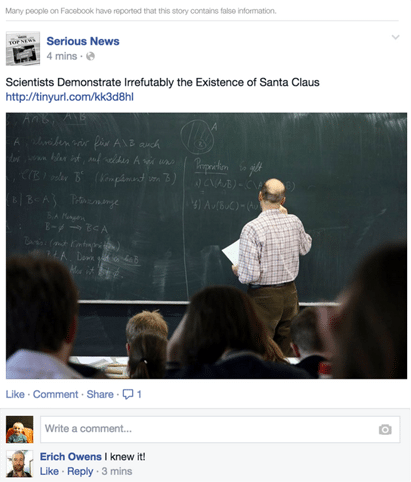 Social media networks are in a constant state of evolution and adaptation. Frequent redesigns and algorithm changes offer users new features, improved functionality and better experiences (most of the time).
Social media networks are in a constant state of evolution and adaptation. Frequent redesigns and algorithm changes offer users new features, improved functionality and better experiences (most of the time).
On Tuesday, Facebook announced one such improvement, introducing an effort to clamp down on "hoaxes" and fake news stories, which are known to spread rapidly through the network's more than 1 billion users.
"Hoaxes," Facebook says, "are a form of News Feed spam that includes scams ('Click here to win a lifetime supply of coffee'), or deliberately false or misleading news stories ('Man sees dinosaur on hike in Utah')." These posts tend to generate derisive comments, and people who share them often end up deleting them.
To reduce the instances of these types of posts appearing in News Feeds, Facebook has added an option to report a story as being "false news" to already-existing functionality that allows users to report spam. Posts that receive lots of reports will be annotated with a warning. Facebook says that "satirical content intended to be humorous" will not be affected by the new functionality.
What does this mean for PR and communications professionals? As long as you're publishing and sharing real, honest news stories, it shouldn't affect you. However, if you let the desire to generate exposure overcome the necessity of telling the truth, your experience on Facebook could become more difficult very soon. Likewise, the new reporting feature could potentially be abused by those who disagree with a particular story or agenda, introducing a new difficulty for everyone on Facebook—even those who share real news.
Follow Brian Greene on Twitter: @bw_greene
